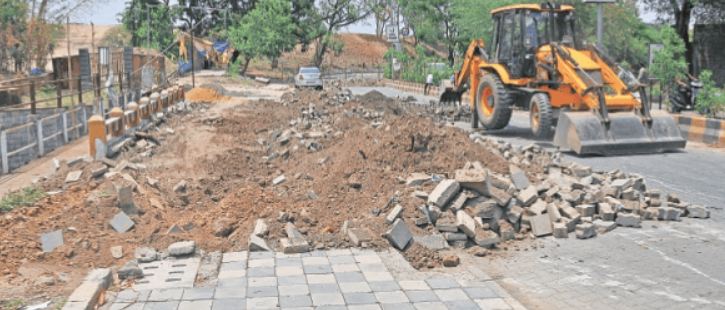As part of flood mitigation efforts in the Ambazari catchment area, the Maharashtra Metro Rail Corporation Limited (MMRCL) is now focusing on initiating the second phase of correction work in the Krazy Castle area. This project involves widening the Naag River, which flows through the site, from its current width of 12 meters to 18 meters to enhance its capacity to carry water. This widening is necessary following a study by the Irrigation Department on last year’s flash floods in the Naag River. The study concluded that the one-kilometer stretch of the river from the overflow point would need to be expanded to handle overflowing water.
The study identified that a narrow channel for overflow caused the river to breach its banks, leading to significant damage in the residential areas along the Naag River. The floodwaters inundated into these residential area because the narrow path could not contain the volume of water that surged following an overflow at Ambazari Lake. In September 2003, similar floods caused widespread damage during the monsoon’s end, when Ambazari Lake was already at full capacity. Consequently, the deluge on September 23, 2023, resulted in severe flooding.
The flood mitigation measures were divided into two phases: immediate actions to prevent water from breaching the river banks during heavy rains, and long-term tasks. The widening of the river falls under the second phase, and MMRCL has completed all preparatory work. Groundwork for this phase will begin soon, said Rajeev Tyagi, Director (Project), as reported by local media.
MMRCL has been assigned the Krazy Castle project, where it is constructing seven wonders. Previously, the castle was a water park with several bridges that redirected the water flow. Additionally, the water channel within the campus was altered, which hindered the free flow when water surged from Ambazari Dam. The narrow width of the channel could not handle the increased volume, leading to obstructions.
Tyagi further explained that the MMRCL team conducted a detailed study to determine the approach for the widening work. He assured that the project would be completed within nine months, regardless of rainfall. The goal is to ensure that by the next monsoon, the Naag River will be wide enough so that if the radial gates are lifted to release heavy flow, the water can move smoothly without obstruction. In addition to widening the river, the project will also involve strengthening the retaining wall. This wall will extend approximately 550 meters and be constructed of concrete to withstand water pressure effectively.
Tyagi explained that building the wall is challenging because workers encountered hard black rock during initial digging. This rock is difficult to break, which will slow down the process. Since the area is near the dam, explosives can’t be used, so heavy machinery will be required to carefully chip away at the rock.
Therefore, excavators will be heavily used to demolish the old wall to make way for a new foundation for a stronger wall.
Tyagi also said that if the black rock proves too difficult to break, Maha Metro might use its equipment’s strength to help construct the new wall.
👉 Click here to read the latest Gujarat news on TheLiveAhmedabad.com




